From red flowers to fruits, from birds to sea creatures, get ready to witness the magical attraction of red. This article will both present a visual feast and increase your admiration for the unique beauties of nature in red.
Let's start exploring the natural wonders in red! We look forward to accompanying you on this exciting journey.
Enjoy this unique experience and get ready to be enchanted by the reflections of red in nature!
Flowers
Rose
The rose is one of the most popular and beloved flowers worldwide. It has been accepted as a symbol of love, beauty and respect throughout history.
The rose, which has about 300 species and thousands of varieties, is a stylish and eye-catching flower that we are accustomed to seeing in many places from our gardens to our weddings.
Tulip
Tulip is the herald of spring with its colorful and fascinating flowers. The love of tulips, which has continued from the Ottoman Empire to the present, even gave birth to the period called "Tulip Era".
In the Netherlands, tulip bulbs were sold at great value during the period known as the "tulip mania".
With its symbolic and historical value, the tulip is a flower that brings the enthusiasm of spring to life.
Carnation

Carnation is one of the favorite members of the flower world with its rich colors and pleasant smell. Carnation, which symbolizes sometimes love and sometimes friendship throughout history, has various meanings in different cultures.
It is frequently used in weddings and various events. Interesting fact, the cut flowers of carnations can last up to several weeks under the right conditions! This cute flower is a great choice to bring joy and beauty to your loved ones.
Zinnia
Zinnia is a flower that reflects the energy of the summer months with its bright colors and striking appearance. It is often preferred in the garden and pot with its easy cultivation and long-term flowering.
This beautiful flower, visited by butterflies and bees, provides activity and vitality in your garden. For those who love to take care of it, zinnias are the perfect choice to add color to the sunny days of summer!
Begonia
Begonia is a dazzling plant with beautifully shaped leaves and elegant flowers.
It is used for indoor and outdoor decorations. A favorite of tropical regions, begonia creates a colorful and stylish atmosphere in homes and gardens. This surprisingly diverse plant is a visual feast!
Dahlia
Dahlia presents a striking appearance with its flowers in various shapes and sizes. This flower of Mexican origin displays adistinctive character in gardens and flower arrangements.
Dahlias are especially popular in flower competitions and photography projects. Interestingly, some dahlias have edible roots.
Geranium
Geranium is an attractive flower, noted for its durability and long flowering time. Available in various colors and species, geranium colorizes gardens and pots with its ever-blooming flowers in summer. This flower, which is also appreciated for its pleasant smell, is an impressive plant that beautifies nature and living spaces.
Hibiscus
Hibiscus is known as the most popular representative of tropical flowers and attracts attention with its large, vibrantly colored flowers. It adds beauty to gardens and living spaces with its elegant structure and eye-catching flowers.
Tea made from hibiscus flowers is beneficial for health and offers a pleasant aroma. The hibiscus, which blooms especiallybeautifully in summer, reflects the striking diversity offered by nature with its tropical beauties and colors.
Salvia Coccinea
Salvia coccinea is an ornamental plant known for its blood-colored flowers. Growing in tropical regions, this herb is popular with butterflies and bees. Its flowers are tubular, bright red in color, and are quite variable in size.
Hippeastrum
Hippeastrum is a succulent bulbous and broad-leaved ornamental plant species with more than 90 species and over 600 hybrids and cultivars.
Native to tropical and subtropical regions of the Americas, these plants are particularly noted for their large red or purple flowers. With their surprisingly large flowers and strong colours, these plants are used as eye-catching ornaments in homes and gardens.
Camellia
Camellia is an ornamental plant originating from Asia with more than 220 species. Among them, Camellia sinensis, which is used in tea making, and tsubaki oil (Camellia japonica), which is preferred in beauty applications, are very popular.
Plants
Cornus sericea

Cornus sericea is an ornamental plant native to North America, which attracts attention with its red shoots and offers a pleasant appearance even in winter.
While it is used to prevent coastal erosion, its fruits have been used by the locals to treat colds, and the bark has been used as a dyestuff and traditional tobacco.
Canna (plant)
Canna is a family of tropical and subtropical plants with 10 species. While not true lilies, they are striking with their showy leaves and red, orange or yellow flowers. It is used both as an ornamental plant and is valuable as a starch source for human and animal consumption.
Kniphofia uvaria
Kniphofia uvaria is a plant belonging to the Asphodelaceae family, offering colorful and striking flowers. Also known as Tritomea, torch lily or angry poker, this plant is popular thanks to its showy red, orange and yellow flowers.
This beautiful plant originating from South Africa is used for decorative purposes in many gardens around the world.
Quercus rubra
Quercus rubra is a powerful and impressive tree that belongs to the red oak group originating from North America. Also called northern red oak, this tree draws attention with its autumn leaves in bright red hues.
Preferring good soil and slightly acidic conditions, this tree grows fast and can live up to 400 years.
Red Maple
Red maple is one of the most common and fascinating trees in North America, adorned with the magical colors of nature. Its majestic leaves dance in shades of red, orange and yellow with the sad farewell of autumn.
This tree, which grows successfully in both moist swamps and dry soils, contributes to the diversity of nature with its flexibility and durability.
With the beauty and benefits it hides, red maple is often used in landscaping to create shaded areas as well as a valuable resource in syrup production. This extraordinary tree is once again a work of admiration in the simplicity and beauty of nature.
Fruits & Vegetables
Plum
Plum, a delicious treasure from ancient civilizations to the present, is one of the colorful and sweet secrets of the fruit world. This fruit, which hides the energy of life in it, enriches our tables on its historical journey from mountains to valleys, from Asia to Europe.
Plum offers a refreshing taste when consumed with its lively and juicy texture, and offers a unique flavor in jam and wine form. Contributing to health with the vitamin C it contains, this fruit is one of nature's sweet gifts to us.
Watermelon
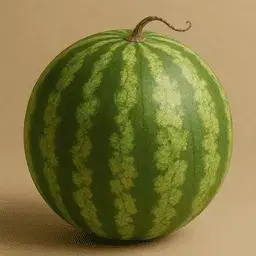
The indispensable fruit of hot summer days, watermelon is the symbol of freshness and taste with its sweet red-pink core and black seeds. This fruit, which is grown throughout the world from the tropics to the temperate regions, has experienced a sweet adventure in the Mediterranean world throughout history.
Watermelon, which is also the leading actor of the drink, is the unique friend of cheerful conversations and pleasant moments
Cranberry

Cranberry, a delicious fruit from the blueberry family that grows in acidic swamps in the cool regions of the northern hemisphere, offers a sweet and sour taste experience.
This alluring red fruit is the star of classic holiday dishes, especially in America and Canada.
Cranberries, which can be consumed both fresh and turned into products such as juice, sauce and jam, will make a colorful and energetic touch on your tables. This is one of my favorite red things in the article.
Raspberry
Red and delicious, the raspberry is the edible fruit of many plant species in the rose family. The benefits of raspberries, which are consumed in different ways such as juice, jam and dried fruit, are also quite high.
Rich in vitamin C and fiber, raspberries strengthen the immune system, support digestive health and have positive effects on heart health. It can also reduce the risk of cancer with its antioxidant properties.
Pomegranate
Pomegranate is a fruit with red grains with many seeds. It is grown in the Middle East, India, the Caucasus, the Mediterranean basin and parts of Asia.
Its delicious fruit also offers many health benefits. It contains antioxidants and vitamin C and is beneficial for heart health. It is also widely used, especially in Middle Eastern and Mediterranean cuisine.
Cherry
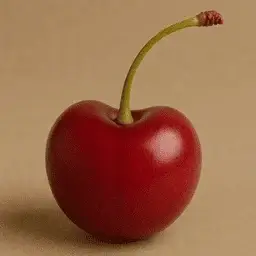
Cherry is a fruit rich in vitamins and antioxidants. The antioxidants it contains protect the body from free radicals and provide a protective effect against cancer.
It also helps maintain heart health, regulates blood sugar, relieves muscle pain, improves sleep quality and improves mental functions.
It can also be a healthy beverage option when juiced, but consuming naturally ripe fresh cherries contains more nutrients and fiber. However, keep in mind that caution should be exercised before consuming as some people may be allergic to cherries.
Apple
Apple is the most common type of fruit grown worldwide. Originating in Central Asia, the apple tree has been cultivated in Asia and Europe for thousands of years. There are hundreds of different flavors and varieties suitable for use.
Apple trees are susceptible to diseases and pests, but they can be controlled with organic or non-organic methods.
93 million tons of apples are produced worldwide and China provides almost half of this production.
Guava
Guava is a fruit grown in many tropical and subtropical regions. It is usually a small tree and apple guava (Psidium guajava) is the most commonly consumed species. Its fruit is a multi-seeded strawberry with white flowers. Guavas are one of the most common tropical fruits traded worldwide.
It was first cultivated in Central and South America and then spread throughout the world. In addition, guava wood is one of the types of wood used in Hawaii for smoking meats.
Redcurrant
Red currant is a plant from the rosaceae family. It grows naturally in Western Europe, but is widely cultivated throughout the world. The berries are transparent red and have an acidic taste.
In England, red currant jelly is often served with lamb, deer, turkey and goose dishes. It can also be used as a garden ornamental plant.
Tomato
It grows naturally in western South America, Mexico and Central America.
The domestication and cultivation of the tomato plant was probably done by the Mexican Indians. Tomatoes are grown in many varieties in temperate climates around the world.
About 180 million tons of tomatoes are produced annually worldwide, making it one of the most produced vegetables in the world. Tomatoes are consumed both raw and cooked and used in various dishes, sauces, salads and beverages.
Nectarine
Nectarine is a type of fruit belonging to the rose family (Rosaceae). Nectarine with smoother skin is a genetic variant of the common peach and was probably domesticated in China 4,000 years ago.
Bell pepper
Bell pepper is among the indispensables of our tables with its sweet, pleasant and slightly bitter taste, which owes its name to its shape and color. This fruit, obtained from the Capsicum annuum type plant, can be grown in different colors.
While its origin is based in Mexico, it reached Europe thanks to Christopher Columbus. Bell peppers are suitable for growing in moist soils at a temperature of 21 to 29 degrees. Delicious, colorful and healthy, this fruit adds flavor to dishes, salads and sauces.
Blood orange
Blood orange is a citrus, also known as "blood orange". It often has a citrus-like flavor as well as a blueberry-like flavor. This particular orange is dark in color thanks to chrysanthemin, a type of anthocyanin pigment.
The fruit that develops under cold conditions may also show dark colors on its outer shell. The three most common types are Tarocco, Moro, and Sanguinello.
Fungi
Sarcoscypha coccinea
Sarcoscypha coccinea, commonly known as the red elf cap, is a fungus found in Europe, Asia, North and South America, and Australia. The fruit bodies of this fungus, named for its bright red inner surface, grow on rotting sticks and branches under defoliation or in moist places in the soil.
While the red elf pot is known to be edible, its small size and rarity make it unsuitable for food gathering. This mushroom has medicinal uses in some Native American tribes.
It has also been used as a colorful component of dining tables in England.
Since it is more common in the northern regions of Russia, it is consumed in salads or simply used to add color to dishes. Sarcoscypha coccinea is often confused with S. occidentalis, S. austriaca, and S. dudleyi due to its similarity and sometimes overlapping of other Sarcoscypha species.
Ganoderma lucidum
Ganoderma lucidum is a type of mushroom with a red color. It has a limited distribution in parts of Europe and China and grows on rotting hardwoods.
The fruit body of the fungus usually has a strip, and the flesh texture is pinkish-buff. Hymenium contains 4-5 pores and chlamydospores are absent.
The use of this mushroom is popular in traditional Asian medicine. However, Ganoderma lingzhi is a popular red Ganoderma strain, and genetic analysis shows that G. lucidum should not be confused with this strain. Fungal taxonomy is chaotic, but recent studies have generally distinguished European and North American species.
Ramaria botrytis
Ramaria botrytis is also known as "Cauliflower Coral". It is an edible mushroom of the Gomphaceae family. Its branches, resembling sea corals, are pinkish red.
Its fruits can grow up to 20 cm and its flavor is described as fruity. It can have an effect that can cause diarrhea in some people. It has antibacterial properties.
It lives in woodlands and symbiotically with deciduous trees.
Russula emetica
The fungus of Russula emetica is reddish in color and the cup width is dome-shaped in young specimens, while in more mature specimens it may be flattened and sometimes have a slight depression or a shallow ombo.
The cup width ranges from 2.5 to 8.5 cm and its margins become prominent with fine radial grooves extending 2 to 7 mm towards the center as they mature.
The flesh of the mushroom is brittle, white in color (or reddish directly under the cap flesh) and 4 to 9 mm thick. It has closely spaced, white to cream colored lamellae called gills, located on the underside of the fungus.
The stem of the mushroom is white, 4.5 to 10.5 cm long and 0.7 to 2.4 cm thick.
Sea Creatures
Pterois
Pterois is a genus of venomous marine fish native to the Indo-Pacific region.
They are characterized by a showy dorsal fin adorned with red or black bands and venomous spines. Pterois radiata, Pterois volitans and Pterois miles are the most frequently investigated species in the genus.
They are known as a popular goldfish.
However, P. volitans and P. miles have come to the fore in recent years as invasive species in the western Atlantic Ocean, the Caribbean Sea and the Mediterranean. It has 18 venomous spines and a total of 2 pelvic, 3 anal and 13 dorsal spines.
Precious coral
It is a red and pink colored coral that grows in the sea and is as precious as a diamond; It is known as precious coral or red coral. It stands out with its most durable and vibrant colored red or pink-orange skeleton used in making a precious jewel.
They grow on the rocky seafloor, in areas with low sedimentation, often in dark environments.
Their size can reach up to 1 meter. The C. rubrum species is usually found in the Mediterranean and grows at depths of 10 to 300 meters above sea level.
Red sea urchin
The red sea urchin is famous for its sharp spines. It is found in kelp beds and lives at a depth of 280 meters from the sea surface.
Their mouths are located on the underside and they eat seaweed and algae.
They move slowly and cling to the seafloor with their upright spines. Interestingly, sea urchins can live for more than 30 years and some specimens are known to be over 200 years old.
Red king crab
Red King Crab is a large-sized and valuable crab species native to the Bering Sea and the Gulf of Alaska. It is preferred for food and is one of the most expensive crab species.
Common starfish
The common starfish is the most common type of starfish in the northeastern Atlantic, belonging to the starfish family. They have five arms and usually grow between 10-30 cm, although larger specimens (52 cm) are also known.
Unlike other sea stars, they can have different colors at different depths. It is also one of the rare sea stars that can stomach out to digest their prey.
Insects
Red harvester ant
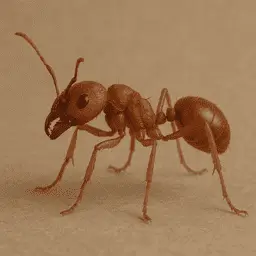
Pogonomyrmex barbatus, aka the Red Blow Ant, is a large (5-7 mm) ant species native to the Southwestern United States. They prefer to live in dry areas such as deserts and steppes.
Their diet consists largely of seeds, and in this way they cooperate with plants to aid in seed dispersal.
Red thresher ants make neat piles of small pebbles without plant growth around their nests.
This mutually beneficial relationship, benefiting both plants and themselves, is known as myrmecochory. Red thresher ants are often confused with fire ants but are not closely related to fire ants.
Sympetrum
Sympetrum is a small to medium-sized, dazzlingly colored predatory genus of ruddhas. They are known as "darters" in England and "meadowhawks" in North America.
They are commonly found in temperate regions of the Northern Hemisphere and have no species native to Australia.
They usually fly in late autumn and breed in ponds.
Some of the males and some females have a bright red color on their whole body or parts.
This genus includes about 50 species and they are also known by interesting names such as "nomad" and "island darter"
Dasymutilla occidentalis
"Dasymutilla occidentalis" or "red velvet ant" is a parasitoid wasp that lives in the eastern United States. Wingless females can be mistaken for real ants. The nickname "cow-killer" was given because of the painful sting of the females.
Females do not build nests, but lay eggs on the young of other bee species.
Males, on the other hand, cannot sting like females, but they fly over the grass to find a mate and protect themselves against danger by making high-pitched sounds.
Bombus lapidarius
Bombus lapidarius, known as the red-tailed bumblebee, is a species found in many parts of Europe. It is known for its black and red colors and is important for pollination.
Their hives usually consist of only a few hundred bees and do not form complex colonies. Their males secrete more sex pheromones than other species, thereby reducing interbreeding.
Vanessa atalanta
Bombus lapidarius, known as the red-tailed bumblebee, is a species found in many parts of Europe. It is known for its black and red colors and is important for pollination.
Their hives usually consist of only a few hundred bees and do not form complex colonies. Their males secrete more sex pheromones than other species, thereby reducing interbreeding.
Red imported fire ant
The red imported fire ant is a species originating from South America and has accidentally spread to many countries and the USA. It is notorious for its venomous bites and is stung by more than 14 million people a year.
It poses serious hazards to both humans and animals and causes billions of dollars in damage.
This ant is one of the most studied insects in the world, and the name "invicta" means "invincible" or "unconquerable" in Latin.
Minerals
Cinnabar
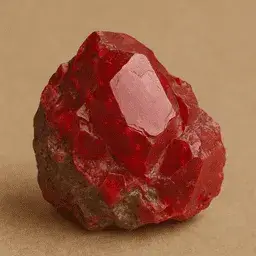
Cinnabar, or cinnabarite, is a red-toned mercury(II) sulfide mineral. It is used to obtain mercury and has also been used as a red pigment throughout history.
It is associated with volcanic activities and alkaline hot springs. Cinnabar is found in many places with rich mercury deposits and has been used for cosmetic purposes since ancient times.
Cuprite
Cuprite is a copper mineral and has a color from deep red to sometimes almost black. It has a higher refractive index than other minerals such as diamond and Gallium arsenide and is rarely used in jewelry making.
The origin of its name comes from the Latin word cuprum for the copper component it contains.
Large, fine crystals from a unique deposit in Onganja, Namibia, have been used for jewelry making.
But the mineral's low hardness limits its value in the jewelry industry. Cuprite is mostly found as a secondary mineral in oxidized copper sulfide deposits and is often found in association with other copper minerals such as malachite, azurite, and chrysocolla.
Jasper
Jasper is a variety of silica that is composed of various minerals and is usually red, yellow, green or rarely blue. Its name means "stained stone" and was popular in the ancient world as well.
It was used to make seals on the Minoan Crest around 1800 BC. Jasper was formed as a result of hydrothermal circulation millions of years ago.
It is not used as ore, but is preferred for making ornaments and jewellery.
Garnet
Garnet is a group of silicate minerals that come in many colors and have been used as both jewelery and emery since the Bronze Age.
The most common color is deep red, but there are also rare blue garnets.
Hessonite garnet is called "gomed" in Indian literature and is one of the components of Navaratna in Vedic astrology. Garnets are broken into pieces like scalpels and separated from other transparent stones by their magnetic attraction.
Mamals
Red squirrel
The red squirrel is the common tree squirrel species of Europe and Asia. Surprisingly agile, these squirrels use their sharp, curved claws to climb tree trunks and branches.
The color and ear feathers of red squirrels, which take on a darker fur in winter, are important features that distinguish them from other squirrel species.
Unfortunately, numbers of red squirrels have decreased in the UK, Ireland and Italy in recent years due to habitat loss caused by humans and competition from gray squirrels from North America.
Red kangaroo
The largest of the kangaroos and the world's largest even-toed animal, the red kangaroo inhabits large areas of Australia.
It distinguishes between the sexes with its long, pointed ears and square-shaped noses.
Males have reddish-brown plumage and are referred to as "Big Reds". Females are smaller and have gray-blue plumage. Kangaroos use many physical, physiological and behavioral adaptations to keep temperatures stable at 36 °C.
Colombian red howler
Have you ever heard of the Colombian red howl? This monkey species living in South America feeds on leaves and lives in large groups. Males and females look similar, although males are larger.
They are known for the howls they make in the morning and it is said that these howls can be heard from 5 km away. Also, these howls are used to prevent strife between groups.
They have a special digestive system to digest leaves and can move freely in trees using their tails.
Red ruffed lemur
Red ruffed lemur is one of the largest species of maquis living in the forests of Masoala in northeastern Madagascar.
Its soft, thick fur is colored red and black and bears a white spot on the back of the neck.
It uses specially designed front teeth to clean its fur. These cute animals living in groups feed on fruit, nectar and pollen.
Red Panda
The red panda, also known as the little panda, is a reddish-brown furry mammal native to the Eastern Himalayas and Southwest China. It is well adapted for climbing, thanks to its flexible knuckles and semi-retractable curved claws.
It usually feeds on bamboo shoots and leaves. It is in danger of extinction, especially due to habitat destruction, deforestation and poaching.
This adorable animal is bred in many zoos around the world and is frequently featured in animated films, video games, and the names of musical groups.
Red fox

The red fox is the largest of the true foxes and one of the most common carnivorous mammals in the Northern Hemisphere. Hunted for the fur trade and hunted as a pest for centuries, this species has close relationships with humans.
Its placement in Australia is on the list of the world's 100 worst invasive species as it harms native mammal and bird populations. They can produce leucistic and melanistic individuals as well as colored feathers.
Red river hog
The red river pig is a breed of pig that lives in Africa. It has reddish-brown plumage, black legs, and a white stripe on its spine. Its habitat is rainforests, swamps and near streams. Although active at night, it is also active during the day.
Pigs, who mostly live in small groups, are quite aggressive against sharks to protect their harems.
They consume a variety of foods, including roots, onions, fruits, seeds, and other animals, as well as pets. They use their large jaws to forage for food in the soil and can damage agricultural crops.
Reptiles
Boa constrictor
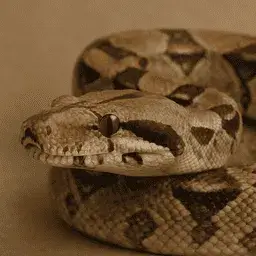
The boa constrictor, as the name suggests, is a type of snake and got its name because it hunts by strangulation like other snakes. This species lives naturally in the tropical forests of South America and is generally known for its large size.
Female boas tend to be larger and heavier than males and can range in length from 3 to 13 feet. It is sometimes kept as a pet and has various color patterns and subspecies.
However, the caveat to reptile enthusiasts is that these snakes can be dangerous due to their large size and should be respected.
Red-footed tortoise
The red-footed tortoise is a species of tortoise that lives in the northern region of South America. They can be found in many different habitats, from forest edges to savannas.
These medium-sized turtles, which can grow up to 40 cm, usually have a dark back shell with a light colored spot in the middle of each scale. On their feet, they have scales ranging in color from light yellow to dark red.
These popular pets feed on a variety of plant species including fruit, flowers, fungi, carnivores and invertebrates. While their eggs, hatchlings, and young turtles are hunted by many predators, the main threats to adults are jaguars and humans.
It is among the endangered species due to ovary foraging, hunting for food, and the pet trade.
Red-eared slider
Trachemys scripta elegans, also known as the red-eared non-skid turtle or red-eared tern, is a species of semi-aquatic turtle of the Emydidae family, due to its ears (or where the ears should be) surrounded by a small, red line and its ability to quickly glide over rocks and logs into the water.
It is native to the midwest to northern Mexico, but is considered an invasive species where it is left as a pet. It is the world's most widely traded tortoise and is among the world's 100 most harmful alien species.
They are popular as pets and can live for 20-30 years, but the quality of their habitat affects their lifespan and well-being.
Red Birds
Northern cardinal

The northern cardinal is a species of bird that lives in North and South America. Males are bright red in color and females have brown tones. Men have a black mask on their face and chest.
They consume seeds, insects and fruits as food. The Cardinal was once sold as a pet in the United States, but its sale was banned by the 1918 migratory bird species treaty.
The cardinal is the official bird of many American states and they are known for their singing ability due to their music.
Red knot
The Red knot is a medium-sized shorebird that breeds in the tundra and Arctic Cordillera in the extreme regions of Canada, Europe and Russia. One of the largest sandpipers, this species is a member of the arctic family of birds.
There are six subspecies, and their feeding habits vary with the season. North American breeding populations migrate to the coasts of Europe and South America, while Eurasian populations migrate to overwinter in Africa, Papua New Guinea, Australia and New Zealand.
When it cannot reproduce, it forms huge flocks. Known for its short legs and thick beak, one of the most interesting features of this bird is its migratory journey, which exceeds 14,000 km per year.
Scarlet ibis
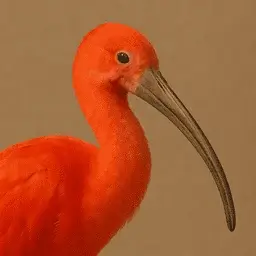
Scarlet ibis is a species of ibis in the bird family Threskiornithidae. It lives in a region of tropical South America and the Caribbean. Like other ibis species, it is similar in form but distinguished by its bright red colour.
The Scarlet ibis is one of the two national birds of Trinidad and Tobago. They usually fly in V formation and are migratory birds. Most of their red color is due to their diet.
Southern red bishop
Southern red bishop, or the red hawk bird in Turkish, is a bird species living in the south of Africa. They are found in places such as stinging and reedy wetlands, and rice fields.
Red-winged blackbird
Red-winged blackbird is a songbird species found in most parts of North America and parts of Central America.
The males especially attract attention with their red shoulder spots and yellow wing bands.
They may migrate as far as Pennsylvania and British Columbia in winter.
It is claimed to be the most common living land bird in North America, with migratory wintering groups containing more than one million birds in loose flocks. Its diet consists of seeds and insects.
There are 20-24 subspecies and most of them are similar in appearance.
However, some subspecies differ markedly in the appearance of female birds. This bird is among the best-studied wild bird species in the world.
Red avadavat
The red avadavat is a small finch species in the estrildidae family. While the males dazzle with their bright red feathers during the breeding season, the females are more plainly colored.
They inhabit the open fields and meadows of tropical Asia and are popular as cage birds because of their colorful plumage.
The name derives from the Indian city of Gujarati and they were formerly exported from this city in the pet trade.
Depending on the season, these little birds' red beaks turn black and red at different times.
They travel in small flocks, feeding mostly on grass seeds and mating in small burrows. There are also introduced populations in many places around the world, particularly in Southeast Asia and Europe.
Red-billed firefinch
The red-billed firefinch is a small bird that occurs in many parts of Africa and is often found in human-dwelling areas. Males have completely red plumage, while females have brown plumage.
This species feeds on seeds and is found in open grasslands, farmlands and around human settlements.
Their nest is a muddy structure built under a large bush or wall. It is parasitized by the village indigobird species.
Red-bellied woodpecker
The red-bellied woodpecker is a medium-sized species of woodpecker that lives in North America. It gets its name from the pale red color of its underside.
Some of his favorite foods are insects, fruits and seeds. They make clicking noises on aluminum roofs and trees to find mates. They use rotted trees to build nests, and trees cut down for a natural nesting site can be a concern for them.
Other Red Things in Nature
Aurora
Aurora is a natural light show that occurs in Earth's polar regions as a result of magnetospheric disturbances caused by solar winds. The aurora can be observed in various colors, in the form of curtains, rays and dynamic flares.
Taking its name from the Roman goddess Aurora, the aurora was described by ancient Greek poets as "color plays in the sky".
Sunrise
Sunrise refers to the moment when the sun appears in the sky by appearing on the horizon line. But it is actually perceived as such because of the Earth's rotation, not the rising of the sun.
Sunrise is not just a momentary event, it is an ongoing process after morning dawn.
The combination of the two is called sunrise when the center of the sun makes an angle of 50 minutes to the horizon. Sunrise changes throughout the year and according to the latitude, longitude, altitude and time zone the person is in.
Red-bellied piranha
Resembling bloody beasts, the red-bellied piranha, famous for its shimmering red belly in the water, is a species that lives in the rivers of South America. Although it has a predatory and frightening image, it actually has a mostly scavenger diet.
An interesting feature is that they may travel in search of breeding conditions due to increased rains at spawning time. The red-bellied piranha is a popular species among aquarium fish.
Sunset
Sunset is when the sun sets in the sky due to Earth's rotation. This event takes place every day and varies according to the observer's location.
The length of the day and time of sunset depend on factors such as the Earth's tilt and rotation, its elliptical orbit around the Sun, and the Moon's rotation around the Earth.
Ultisol
Ultisol is a soil class commonly known as red clay soil. Its name is derived from the word "ultimate" because these soils are seen as the end product of mineral weathering in a humid, temperate climate without glacial action.
These soils are often lacking in nitrogen, calcium and potassium and are not suitable for agriculture.
Autumn leaf color
Fall leaf colors are when the normal green leaves of some deciduous trees and shrubs change to different colors during the fall season, such as yellow, orange, red, purple, and brown.
This color change occurs as a result of the reduction of the chlorophyll pigment and the emergence of other pigments.
In Canada and the USA, "leaf peeping" tourism is a major economic activity at the time of autumn colours.
Eastern newt
Eastern newt, a common salamander species in the eastern United States, produces tetrodotoxin, making it inedible for predator fish and crabs.
Living on land during their youth, they go through a stage called "red eft", which is bright orange in color. Adults that live under water have a duller color and have sticky skin. These animals can live up to 15 years and are also popular as aquarium pets.
Red-veined darter
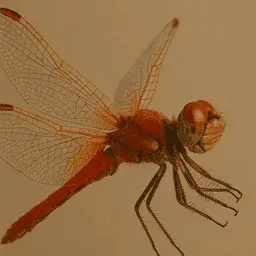
The red-veined redfish or wandering (Sympetrum fonscolombii) is a species of dragonfly belonging to the genus Sympetrum.
It is a common and common species in Europe, North Africa, the Middle East, Southwest Asia, India and Sri Lanka.
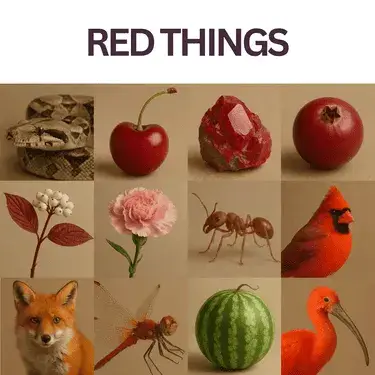
Related Articles: Green Things, Purple Things, Blue Things